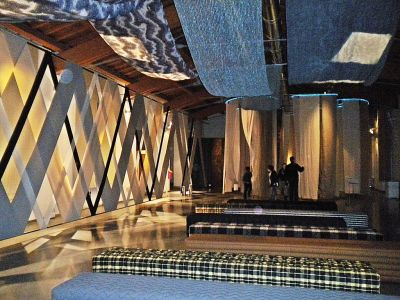Two basic formulations of classical mechanics are those of Hamilton and
Lagrange. These formulations are both elegant and general in the sense
that they provide a unified framework for treating seemingly different
physical systems, ranging from classical particles and rigid bodies to
field theories and quantum systems. Since the middle of the last
century, classical mechanics and classical field theories have evolved
hand in hand with booming areas of mathematics such as differential
geometry and the theory of Lie groups.
The aim of the EU-funded 'Geometric mechanics' (
GEOMECH)
project was to bring together scientists working on the
'geometrisation' of physical theories. They applied the tools and
language of modern geometric mechanics to investigate, for example,
mechanical systems that have rolling wheels without slipping and/or
certain kinds of sliding contact. These systems are examples of
so-called non-holonomic systems. Unlike classical Lagrangian or
Hamiltonian systems, these more general systems are subjected to
constraints on the velocities, and quite often they exhibit a
counter-intuitive behaviour. In the context of the GEOMECH project,
mathematicians from seven countries shared their knowledge on these
non-holonomic systems and deepened the current understanding of their
behaviour. Also the discretization of mechanical systems of
non-holonomic type and the construction of numerical integrators for
them have been studied.
GEOMECH scientists also treated the effect of symmetry in mechanics
and field theory. Symmetries are mathematically represented by Lie group
actions and they can be used to reduce the number of degrees of freedom
of the system on which they act by grouping together equivalent states
and exploiting the occurrence of conserved quantities.
A variational principle, called the Hamilton-Pontryagin principle,
was introduced in the framework of classical field theory. The GEOMECH
scientists showed that the resulting field equations can be described by
an extension of the concept of Dirac structure.
Progress has also been made in the study of time-dependent
mechanical systems, which were described as a special case of field
theory, and on the differential geometric analysis of second-order
differential equations, including the inverse problem of the calculus of
variations. The latter deals with the problem of investigating whether
or not a system of differential equations is equivalent to a Lagrangian
system.
The close collaboration between GEOMECH partners resulted in more
than 80 papers published in peer-reviewed journals or uploaded on
arXiv.
Links established with the research done by physicists provided a
unique opportunity to bring forward new ideas supporting mathematical
sciences research. It is hoped that joining their efforts will impact
the future of geometric mechanics in Europe.

